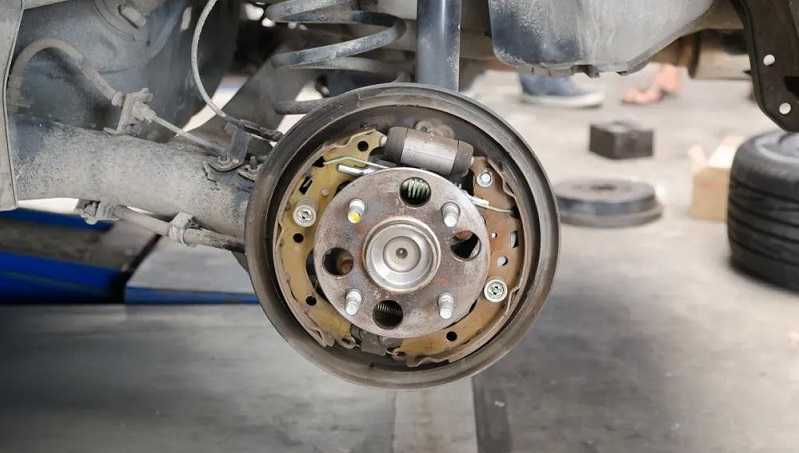How Often Should You Get Your Brakes Done

Determining the optimal brake service interval isn't a simple matter of mileage. It's a complex equation influenced by driving habits, environmental conditions, vehicle type, and the specific braking system components in use. For automotive professionals, understanding these factors is crucial for providing accurate assessments and effective recommendations to customers.
Factors Influencing Brake Wear
The primary factor dictating brake wear is, of course, usage. Aggressive driving, characterized by frequent hard braking and stop-and-go traffic, will significantly accelerate wear compared to gentle highway driving. This is because the pads and rotors experience greater thermal stress and friction, leading to faster material degradation. Similarly, vehicles operating in mountainous terrains or regularly towing heavy loads place significantly higher demands on the braking system.
Environmental conditions also play a vital role. Road salt, commonly used in colder climates, is highly corrosive and can accelerate rotor rusting and pad deterioration. Dust and debris can also become embedded in the brake pads, acting as abrasives that score the rotors and reduce braking efficiency. Furthermore, humidity can contribute to rust formation on rotors, even in warmer climates.
Vehicle type and weight are also crucial determinants. Heavier vehicles inherently require more braking force to stop, leading to increased wear. Smaller, lighter vehicles with less powerful engines tend to experience less aggressive braking patterns and thus exhibit slower brake wear.
Brake System Components and Their Longevity
The type of brake pads and rotors installed significantly impacts longevity. Organic brake pads are generally quieter and produce less dust but tend to wear faster than semi-metallic or ceramic pads. Semi-metallic pads offer a good balance of performance and durability, while ceramic pads are known for their long lifespan, low dust production, and fade resistance, but they can be more expensive and may require higher operating temperatures to perform optimally. Rotors also come in various materials, including cast iron, which is common and cost-effective, and composite materials, which are lighter and offer improved heat dissipation.
Beyond pads and rotors, the calipers themselves can influence brake performance and wear. Sticking or malfunctioning calipers can cause uneven pad wear and premature failure. Brake lines, if corroded or damaged, can compromise braking effectiveness and require immediate attention.
Alternatives and Comparisons
Traditionally, brake service intervals were often based on fixed mileage recommendations, such as every 30,000 to 50,000 miles. However, modern automotive technology and diagnostic tools allow for more precise and personalized assessments. Alternatives to fixed mileage intervals include:
- Visual inspection: Regularly inspecting brake pad thickness and rotor condition is essential. This should be part of any routine maintenance check.
- Performance-based assessment: Monitoring braking performance, such as stopping distance and pedal feel, can indicate the need for service.
- Electronic brake wear indicators: Many modern vehicles are equipped with sensors that alert the driver when brake pads are nearing the end of their service life.
Comparing these methods, visual inspection offers a direct assessment of component wear, while performance-based assessment considers the overall braking system's functionality. Electronic wear indicators provide a convenient alert but may not always accurately reflect the actual condition of the brakes.
Reliability and Maintenance Tips
To maximize brake system reliability and lifespan, consider the following maintenance tips:
- Regularly flush and replace brake fluid: This removes moisture and contaminants, preventing corrosion and maintaining optimal hydraulic pressure.
- Lubricate caliper slide pins: This ensures smooth caliper movement and even pad wear.
- Inspect brake lines for damage: Replace any corroded or damaged lines immediately.
- Address any unusual noises or vibrations promptly: These can indicate underlying problems that need attention.
Following these maintenance practices will not only extend the life of the braking system but also ensure safe and reliable vehicle operation.
Future Trends in Braking Systems
The automotive industry is constantly evolving, and braking systems are no exception. Future trends include:
- Increased adoption of regenerative braking: Electric and hybrid vehicles are increasingly using regenerative braking to recover energy and reduce wear on conventional brakes.
- Development of advanced braking materials: New materials are being developed to improve brake pad and rotor performance, durability, and heat dissipation.
- Integration of advanced driver-assistance systems (ADAS): ADAS features like automatic emergency braking (AEB) rely heavily on the braking system and will drive further innovation in braking technology.
- Solid-state brakes: Though still in early stages, research into solid-state braking systems that rely on electromagnetic forces rather than friction could revolutionize braking technology.
Conclusion
Determining the "correct" brake service interval is less about a rigid mileage number and more about a holistic assessment of driving habits, environmental factors, component condition, and braking performance. Automotive professionals who embrace this comprehensive approach, stay updated on emerging technologies, and prioritize preventive maintenance will be well-equipped to provide their customers with the best possible brake service and ensure their safety on the road. The shift towards electric vehicles and advanced driver-assistance systems will undoubtedly reshape the landscape of braking technology, requiring automotive professionals to continually adapt and expand their knowledge base.
